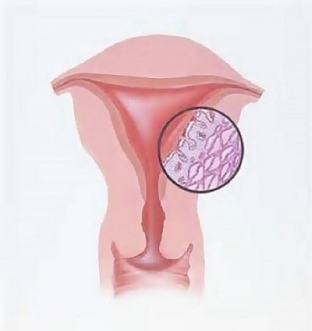Pain during menstruation is a condition familiar to every woman of reproductive age. Unpleasant sensations in the lower abdomen and lower back during menstruation often occur in many women. But the line between the normal state and pathology is very thin, rare discomfort and constant severe pain differ significantly from each other. The cyclically recurring pain syndrome that accompanies menstrual bleeding is called algomenorrhea. And it is not necessary to suffer at all, since it is quite possible to cure this pathology.
Pain during menstruation as a manifestation of primary dysmenorrhea
Algodysmenorrhea can be secondary, that is, developing against the background of another pathology of the pelvic organs, and primary - not associated with anatomical changes in the internal genital organs. Pain during menstruation with primary algomenorrhea can disturb a woman for many years, significantly worsening her quality of life. Many women during this period literally fall out of their usual way of life, preferring not to leave the house and endure pain. But modern methods of treating algomenorrhea will help you quickly and easily eliminate discomfort and return to your usual way of life.
Pain during menstruation - algomenorrhea:
- The main causes of pain during menstruation;
- clinical picture of algomenorrhea: characteristic symptoms;
- basic diagnostic criteria for primary dysmenorrhea;
- what treatments will help eliminate the pain during menstruation.
The main causes of pain during menstruation
Primary dysmenorrhea occurs in adolescence approximately 1-1.5 years after the first menstruation.
 The occurrence of pain during menstruation in this case is due to the high level of prostaglandins in the menstrual endometrium, which are powerful stimulants of uterine contraction, which causes pain. An important role in the etiology of primary algomenorrhea is also assigned to the individual characteristics of the woman's nervous system, the levels of her emotional excitability and pain sensitivity. The following prerequisites for the occurrence of primary algomenorrhea are distinguished:
The occurrence of pain during menstruation in this case is due to the high level of prostaglandins in the menstrual endometrium, which are powerful stimulants of uterine contraction, which causes pain. An important role in the etiology of primary algomenorrhea is also assigned to the individual characteristics of the woman's nervous system, the levels of her emotional excitability and pain sensitivity. The following prerequisites for the occurrence of primary algomenorrhea are distinguished:
- insufficiency of the luteal phase of the menstrual cycle;
- insufficient levels of endogenous opiates;
- functional failure of endometrial enzymes;
- Excessive content of prostaglandins in the endometrium.
Clinical picture of algomenorrhea: characteristic symptoms
The clinical picture of primary algomenorrhea is quite characteristic: during menstruation or a few days before it, a woman begins to be disturbed by cramping pains in the lower abdomen, which can radiate to the lower back, groin, thighs, external genitalia, rectum. The intensity of pain can be different, but in most cases, the pain during menstruation is quite strong, debilitating. Accompanying bouts of pain may be the following symptoms:
- general weakness of the body;
- nausea and vomiting;
- dizziness and headache;
- increase in body temperature to subfebrile values;
- abdominal bloating and stool disorders;
- fainting and autonomic disorders.
Basic diagnostic criteria for primary dysmenorrhea
It is not difficult to diagnose primary algomenorrhea, since characteristic complaints and anamnesis data allow you to quickly establish a diagnosis. The diagnosis of primary algomenorrhea is based on the following criteria:
- anamnestic data: young age of patients, pain during menstruation 1-1.5 years after menarche;
- presence of vegetovascular symptoms accompanying algomenorrhea;
- absence of any organic pathology during gynecological examination;
- asthenic physique of the patients, emotional lability.
What treatments will help eliminate the pain during menstruation
Treatment of primary dysmenorrhea should be complex and selected individually for each individual patient. Therapeutic regimen to help relieve period pain may include:
- prescribing drugs that inhibit prostaglandin synthesis;
- antispasmodic and analgesic drugs;
- combined estrogen-progestogen preparations with a high content of progestogens;
- sedatives;
- vitamin therapy - vitamin E prescription;
- physiotherapy and acupuncture: novocaine electrophoresis on the solar plexus area, ultrasound, etc.;
- selection of an adequate work regime and rest for the period of menstruation.
Scientists have proven that strong motivation and strong-willed efforts, as well as the ability to switch your attention to any activity, will help not only ease the pain during menstruation, but also completely eliminate it.






Add a comment